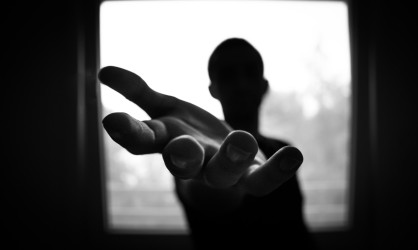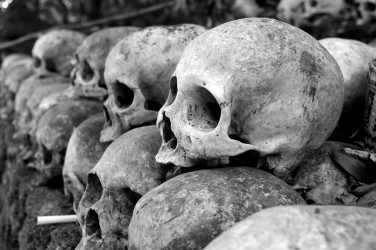Digging Up the Origin of Zombies
While zombies have been on the pop culture radar pretty heavily for several decades now, the history of this undead phenomenon has a history deeply rooted in the Haitian Voodoo religion—in fact, the belief in zombies is still a relevant aspect of New Orleans Voodoo. In our western society, we rely heavily upon our knowledge of what is presented to us in movies and television, but the zombie culture we know and love evolved from a very real magical tradition. Original zombification didn’t involve leaks from biological factories, like what happened in Train to Busan (2016), or an airborne virus as was the case in AMC’s The Walking Dead (2010)—it involved a spiritual, magical, and chemical process that arose through voodoo ritual which required the calling of several voodoo spirits (Loa).
Where we see zombies being portrayed as people who have died then coming back to life, the voodoo tradition it is actually a person who is under the powerful influence of psychoactive drugs. These drugs are usually administered to the unfortunate person by a bokor, the voodoo equivalent to a sorcerer or witch doctor. After being dosed with these psychoactive drugs, the victim essentially goes into drug-induced paralysis which mimics death so profoundly that it is rumored that people have been buried alive after being zombified. This is the case in one of the original, classic zombie films The Serpent and the Rainbow (1988), where the main antagonist, is buried alive while fully cognizant—which, needless to say would be incredibly terrifying.
The Process of Zombification
There is a lot of disagreement about whether or not the person who is to become a zombie is actually deceased or not—some believe that the process revives the recently dead into mindless, soulless automatons, while others insist it’s just the effect of psychoactive drugs that leaves the victim in a state of deep, chemical-induced paralysis, which mimics death to the point that even vital signs are not measurable. Within the Voodoo religion, only bokors have the power to create and control zombies, while the methods and ingredient amounts changes from each individual bokor, the process follows the same pattern. Some processes use voodoo dolls, blood and hair from the intended victim, and others use a “zombie” powder—this powder is a concoction of varies herbs and animal parts, most of which are poisonous, as well as human remains.
This powder can then be administered through ingestion or injection and begins to take effect immediately. Immobility, slowed vitals, and reduced oxygen intake occur within minutes which results in the death-like paralysis where the victim is still fully conscious of their surroundings. Once officially declared dead, the victim is buried alive and within eight hours, the bokor digs up the body to keep the victim from actually dying from asphyxiation. Other procedures follow, which result in a mindless and easily controlled zombie which does the bidding of the bokor who created it. The person remains a zombie until the bokor passes away and is no longer capable of administering the drug that maintains the victim’s zombie-like state.
Clairvius Narcisse the Real Haitian Zombie
Zombification is often referred to as either a solely magical or physical experience, but in truth it is a mixture of both, it’s essential for a person to have a belief in voodoo and the ability to be turned into a zombie in order for the process to work in its entirety. This was the case for Clairvius Narcisse, the man who claimed to be a zombie, but returned home after eighteen years and his story was finally told.
In 1962, Narcisse was admitted to the Albert Schweitzer Hospital in Deschapelles, Haiti. He complained of fever, body aches, and ‘general malaise,’ but after being admitted he began to spit up blood. His condition declined rapidly, until two days later when he was officially pronounced dead by two separate physicians. Narcisse’s sister, Angelina, was present when he was declared dead and then notified the rest of the family, a day thereafter his body was buried, and ten days after that a concrete memorial slab was placed atop the grave by his family.
What most the family didn’t know is that Clairvius had actually been pulled out of the grave and resuscitated. He was given the zombie concoction and kept in a zombie-like state for two years, working as slave labor in a region of the country that was much farther north. This was all done at the behest of his brother, after refusing to sell his portion of the family estate to him. After two years of being a zombie, his master had been killed, then he and all of the other zombie-slaves were released from their chemical induced state of submission. Clairvius stayed away from his home for the next sixteen years, knowing that his return would make his brother aware that he was no longer being controlled by another. Once his brother passed, he finally returned home, where he approached his sister Angelina in a local marketplace and introduced himself by his childhood nickname which she and a few other intimate family members alone were aware of.
Investigating the Haitian Zombie with Hamilton Morris
The following six-part Vice production follows the investigation of The Haitian Zombie, with Hamilton’s Phramacopeia, in order to find the truth behind the folk magic and legends of this walking dead phenomenon; Hamilton follows the scientific trail to the origin of the poisons that are said to cause Zombification in order to bring them back for formal chemical analysis.
Please watch the following footage with discretion–there are scenes and images that some viewers may find disturbing.
These videos are meant to be educational in nature.
Part One
This first episode goes into the initial introduction, including the nature of what Zombification entails.
Part Two
The following video contains graphic footage included in a voodoo ritual, in which an animal sacrifice is made for the Loa, please be advised it may be considered disturbing to some viewers.
Part Three
In this third episode, Hamilton goes to find a Bokor in order to witness the process of Zombification, but results in angering the Bokor and being told the deal is off.
Part Four
Hamilton goes to find the main ingredient of Zombie powder, in this fourth episodes, which is a species of puffer fish.
Part Five
In the fifth part of Investigating the Haitian Zombie, Hamilton meets up with another Bokor who possesses the Zombie powder that they have been searching for and witnesses a real zombie.
Part Six
The final installment of the investigation into Haitian zombies, they travel back to the Bokor who showed them what they had been searching for to come through with the final product they paid for.
Knowing what we have learned from different sources, about the process of Zombification, can it truly be said that it is a purely chemical process? These videos in particular have all but debunked the rationale that it can all be chalked up to a chemical reaction, so some aspects of this spiritual process is often contributed to the powerful belief in their magical practices. What do you think about the phenomenon of Zombification? Let us know in the comments below.

Georgia-based author and artist, Mary has been a horror aficionado since the mid-2000s. Originally a hobby artist and writer, she found her niche in the horror industry in late 2019 and hasn’t looked back since. Mary’s evolution into a horror expert allowed her to express herself truly for the first time in her life. Now, she prides herself on indulging in the stuff of nightmares.
Mary also moonlights as a content creator across multiple social media platforms—breaking down horror tropes on YouTube, as well as playing horror games and broadcasting live digital art sessions on Twitch.


